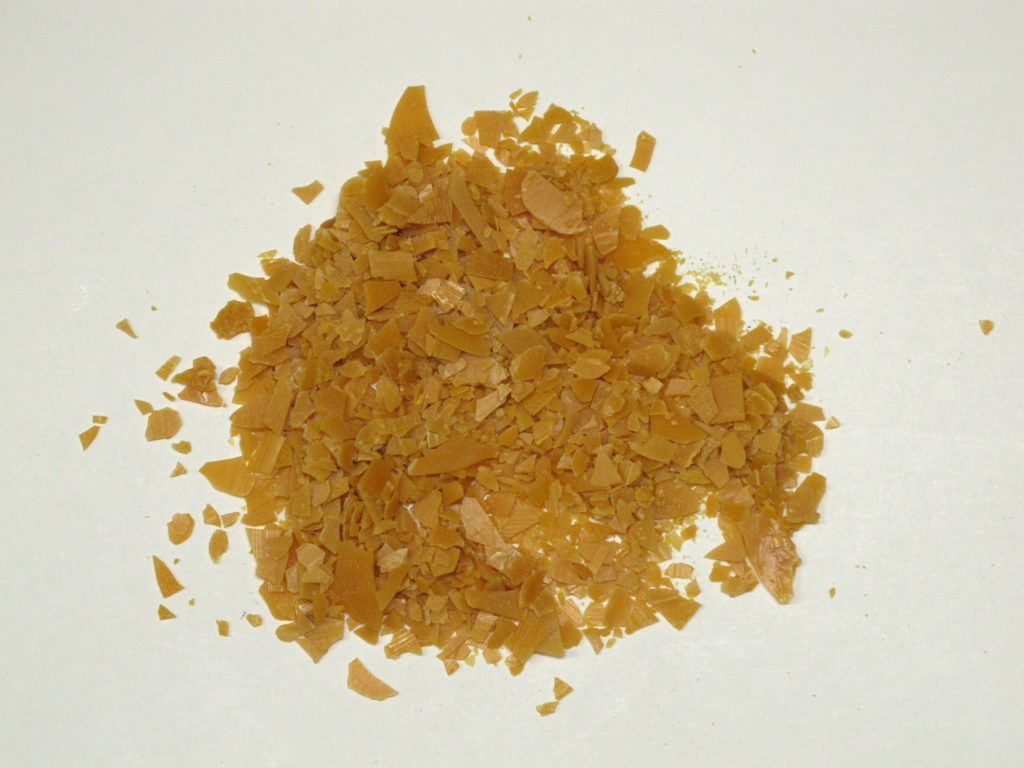We may receive a commission when you use our affiliate links. However, this does not impact our recommendations.

Carnauba wax flakes.
The first big investigation I ever did for an article in a woodworking magazine was on paste waxes. I collected 13 different brands and tried to figure out the differences. I also read as much as I could find on wax.
This was all brought back to me when I got into the long discussion about wax that I told you about in my last post. My friend was trying to figure out how to create a paste wax that was harder and glossier than commercial brands. As I had learned in my research years ago, hardness corresponds with melting point and gloss. So a very hard wax such as carnauba has a higher melting point (about 180° F.) than beeswax (about 150°) than paraffin wax (about 130°). It also has a higher shine.
So the obvious solution for my friend was to use pure carnauba wax. But the problem is that it gets so hard it’s almost impossible to buff off, even with an electric polisher. Manufacturers who use carnauba in their waxes (often advertising this on the label) blend it with softer waxes to make it workable. The optimum melting point for the blends seems to be around 150 degrees.
This blend isn’t necessarily optimal for the highest shine and hardness, however. It could be that a higher shine and hardness could be achievable and still be possible to buff out. So I suggested that an easy way to experiment would be to get a can of commercial paste wax and dissolve more and more carnauba wax flakes into it until it becomes no longer workable. Do this by putting some of the commercial wax and some carnauba flakes into a container, and heat it in a pot of hot water until the two can be mixed by stirring. Never heat the wax directly over a flame, or it could catch fire.
– Bob Flexner
Here are some supplies and tools we find essential in our everyday work around the shop. We may receive a commission from sales referred by our links; however, we have carefully selected these products for their usefulness and quality.









I keep paraffin wax, beeswax, carnauba, microcrystalline wax, mineral oil, and mineral spirits/turpentine in stock so I can make many different waxes depending on the properties I want it to have.
Aiming for a hard/shiny wax composition, I’ll mix up 1 part paraffin wax with 1 part mineral spirits, I’ll add carnauba until the mixture has a gritty feel to it . I feel for grit by dipping a wood dowel in the molten mixture, then setting it aside until it has cooled and then I’ll use my finger to apply the wax to a fingernail. I then add a bit more paraffin to the mixture to get just beyond having the gritty feel. This makes one of my favorite wax compositions, hard/shiny and relatively easy application.
An old trick is to use a hair dryer on low heat to soften and smooth the wax after applying to your project. A simple hand buffing with soft cloth will leave a nice patina.
and?
Bob, what’s your view of using the Beale buffing system to apply carnauba wax directly to small items like turnings?